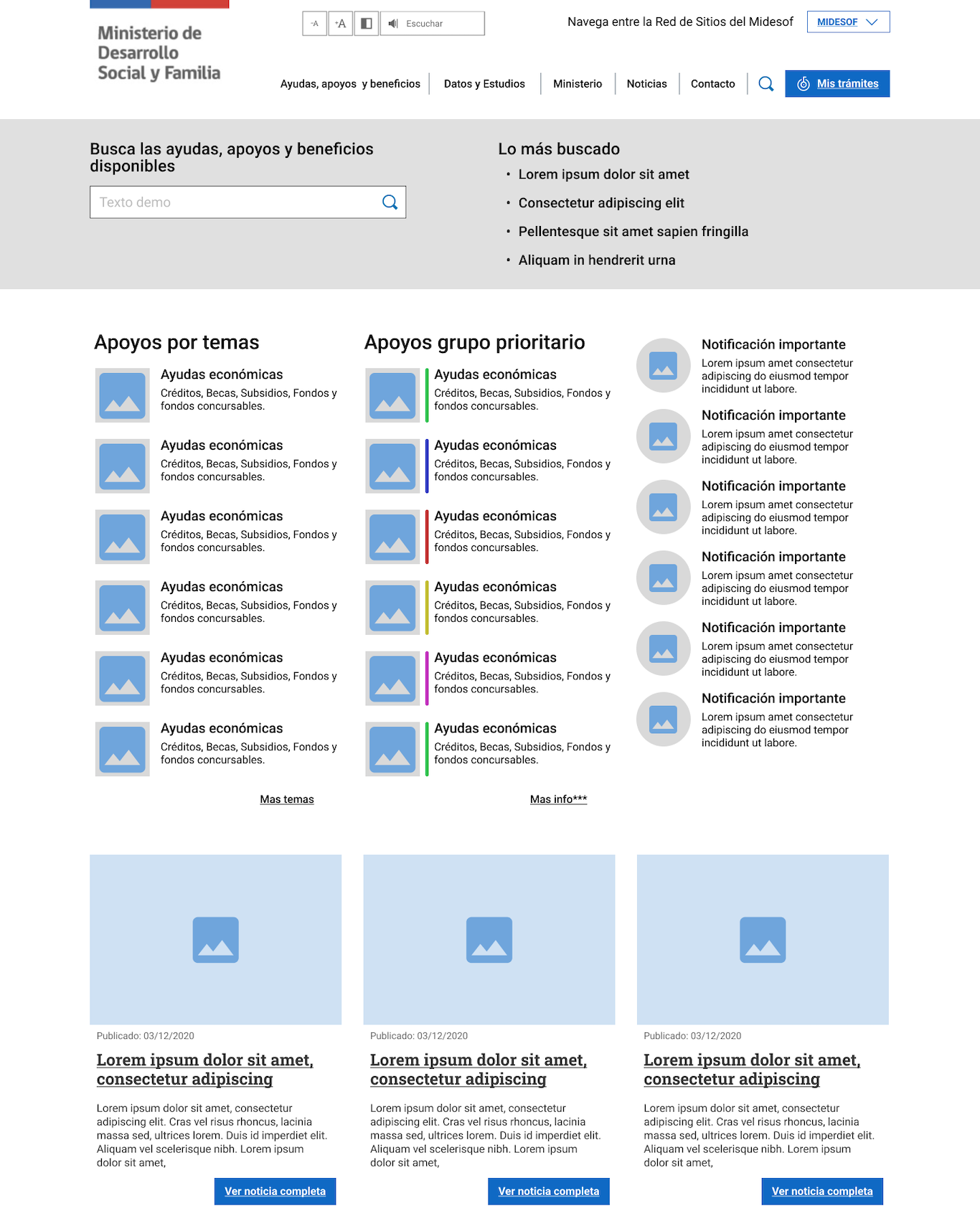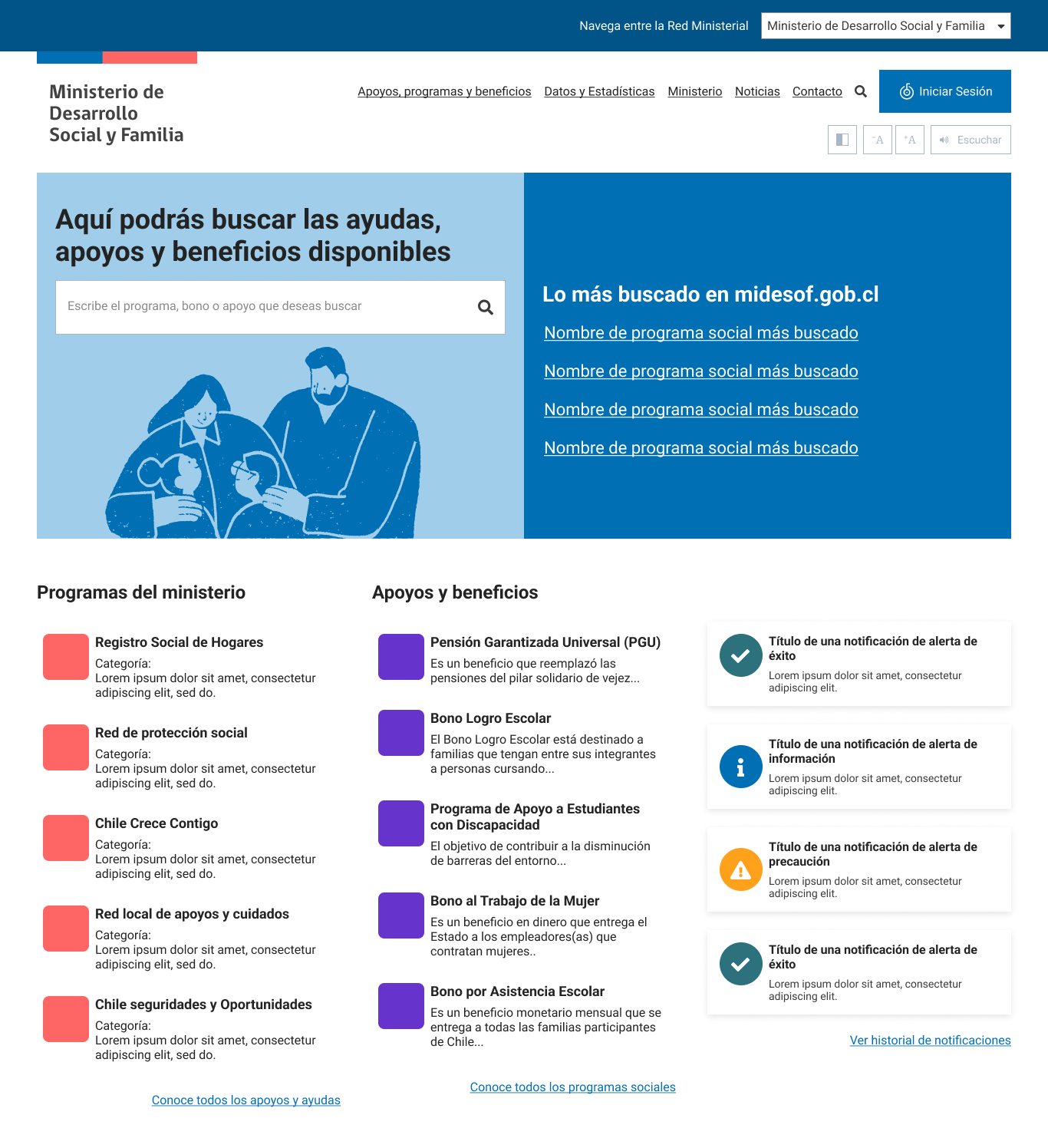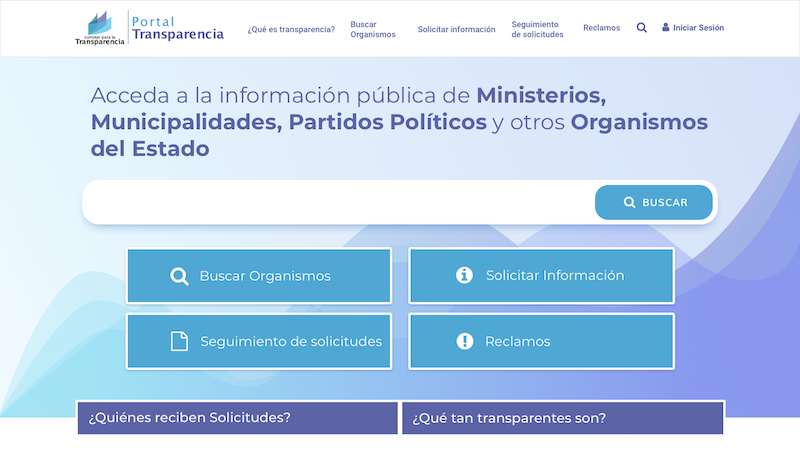

Summary
Redesigned MIDESOF's public website from a link hub into a service-oriented experience that helps citizens discover, understand, and start social benefits with fewer detours to external sites. I led the research and prototype validation that shaped the information architecture, navigation standards across the ministry network, and the foundation of a lightweight design system.
The Problem
- Citizens were routinely "kicked out" to 100+ external microsites with inconsistent patterns and no clear way back.
- Critical information (e.g., Registro Social de Hogares – RSH) was hard to find or buried in technical language.
- Users confused the ministerial network (Red MIDESOF) with the main site; navigation and labels didn't match how people search.
- The site needed to flex during emergencies (e.g., "Código Azul") and still keep paths simple.
What I Did
Discovery & Expert Review
- Interviewed sponsor areas (public attention, regional offices, data/analytics, digital strategy) to align on outcomes and constraints.
- Expert audit focused on navigation continuity across the "Red MIDESOF," language clarity, and contingency access.
Prototyping
- Built a low-fidelity, navigable prototype to test flows early (desktop + mobile probes).
- Deferred search stress-testing to reduce participant load, while defining the architecture for global + sectional search.
Usability Testing (2 Iterations)
- Round 1 – Current site (5 participants) including people with low vision and hearing/speech disabilities.
Tasks: OIRS complaint, SEREMI regional info, Bono Logro Escolar, ENDIDE results, Fondo para Vivir Mejor. - Round 2 – Prototype (6 participants) across priority journeys.
Tasks: RSH, Bolsillo Familiar Electrónico, SENADIS (and return via network header), OIRS, SEREMI contacts. - Captured task success, paths, perceived difficulty (1–7), and post-task feedback; no moderator assistance during tasks.
Key Insights
- Name things plainly. People search by exact words; copy for RSH and program names needs everyday language.
- Show the network, don't hide it. Users mistook agencies like SENADIS for "programs"—the site must declare the Red MIDESOF and always offer a clear way back.
- Don't force derivation. Where possible, resolve tasks in-site; only link out when essential and keep the trail obvious.
- Design for emergencies. Prominent, action-oriented entry points for urgent benefits are non-negotiable.
Design Outcomes
Information Architecture (validated)
- Hybrid information architecture by life stage (Children, Youth, Adults, Older Adults) and theme (Benefits, Disability, Care, Pensions, etc.).
- "Integrate vs. coexist" rule: centralize when it reduces friction; keep certain sites independent—but always provide a consistent return path.
Navigation Continuity (network-wide)
- A unified Red MIDESOF header that makes location/return obvious across ministerial sites.
- Persistent Home entry (not only via logo) and predictable global + sectional search.
Content Strategy
- Plain-language primers for RSH and key benefits ("What it is," "Eligibility," "How to access," "What you need").
- Consistent labels and link text to match common search terms.
Emergency Readiness
- Dedicated contingency module to surface urgent benefits (e.g., "Código Azul") with short, start-now paths.
Design System (handoff)
- Starter component library (navigation, menus, buttons, cards, grids, color/typography tokens) to drive consistency and accessibility across pages and the broader network.
Impact
- Clear, validated direction for information architecture and navigation spanning the ministerial network.
- Simpler, shorter paths for core journeys (RSH, benefits like Bolsillo Familiar Electrónico, OIRS, SENADIS access, regional contacts).
- Faster delivery downstream thanks to a lightweight, reusable design system.
- Post-launch, the ministry planned to track success/efficiency via analytics and run follow-up benchmark tests to quantify gains.
My Role & Contributions
- Defined research plan, protocols, and success metrics; recruited and moderated sessions.
- Translated findings into information architecture decisions, navigation standards, and copy direction.
- Led prototype scope and testing cadence; facilitated sponsor reviews and decision workshops.
- Shaped the initial design-system handoff for implementation teams.
Methods & Tools
Interviews, expert review, task-based usability testing (11 sessions), low-fidelity prototyping, information architecture modeling, content strategy, and a Figma-based design system.
Selected Artifacts
- Prototype (flows for RSH, OIRS, benefits) — link available on request
- Testing protocol & task scripts — available on request
- Design system starter (navigation + components) — available on request
Why This Matters
Government websites are essential services. By aligning architecture, language, and network navigation to how people actually search and move, we reduced friction for millions—particularly for those who rely on benefits the most.


